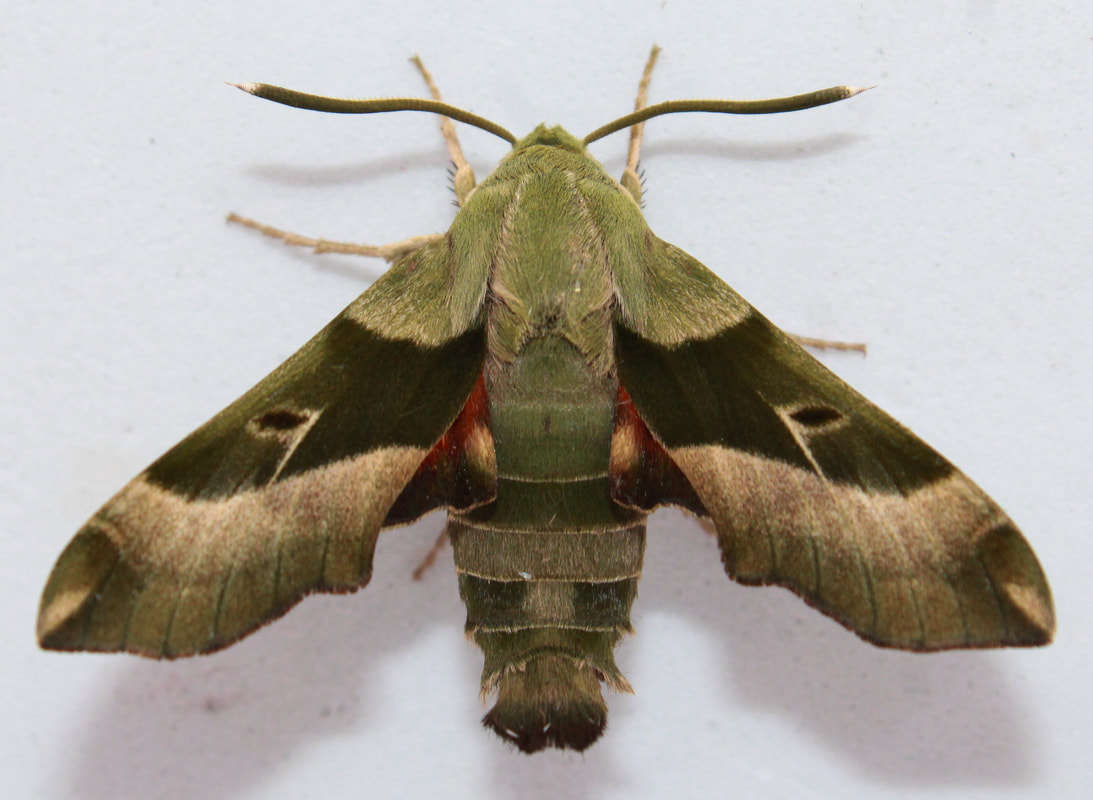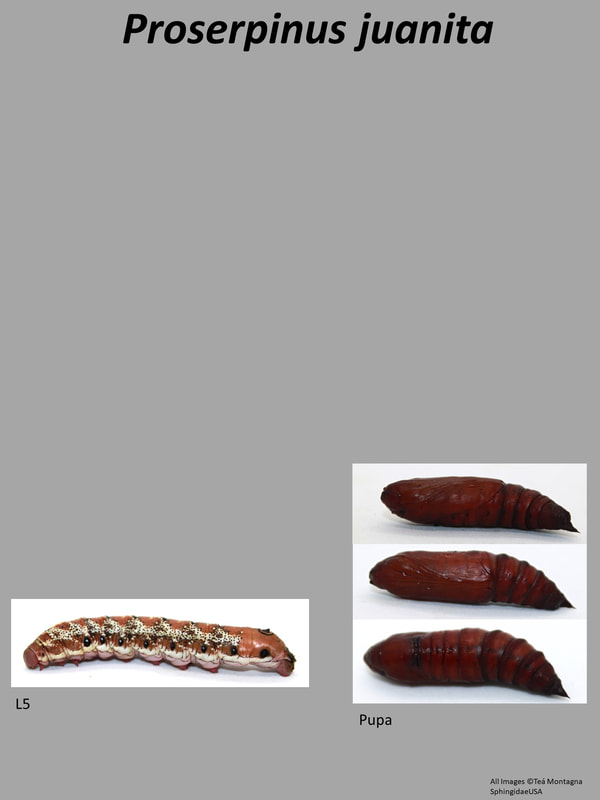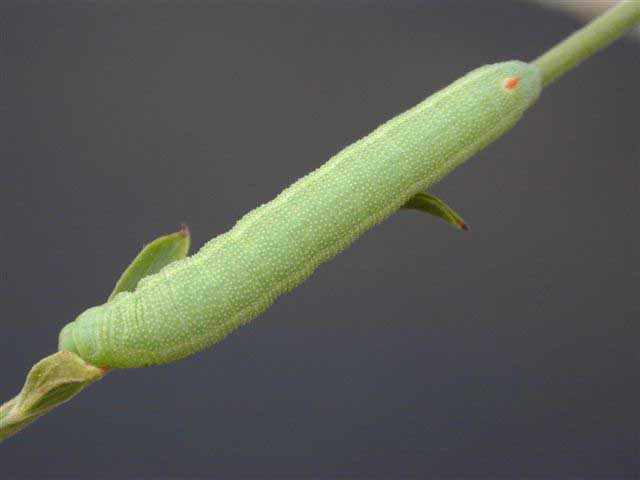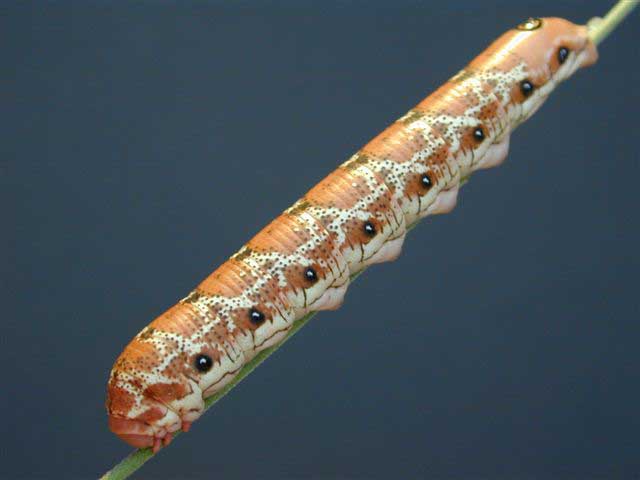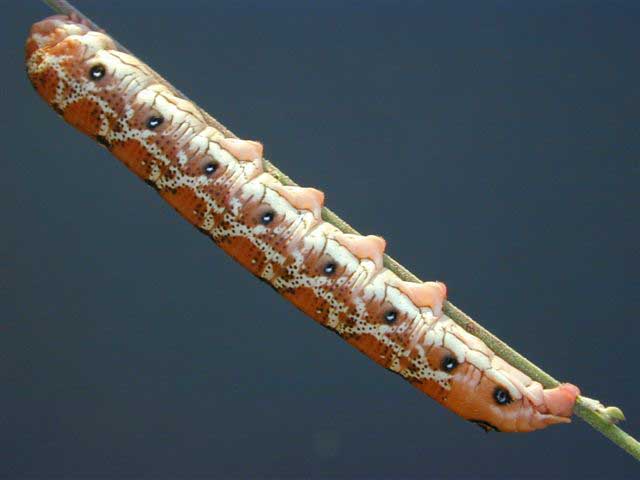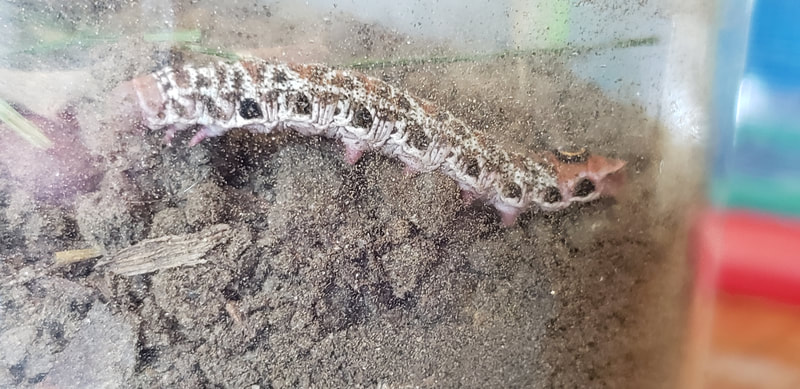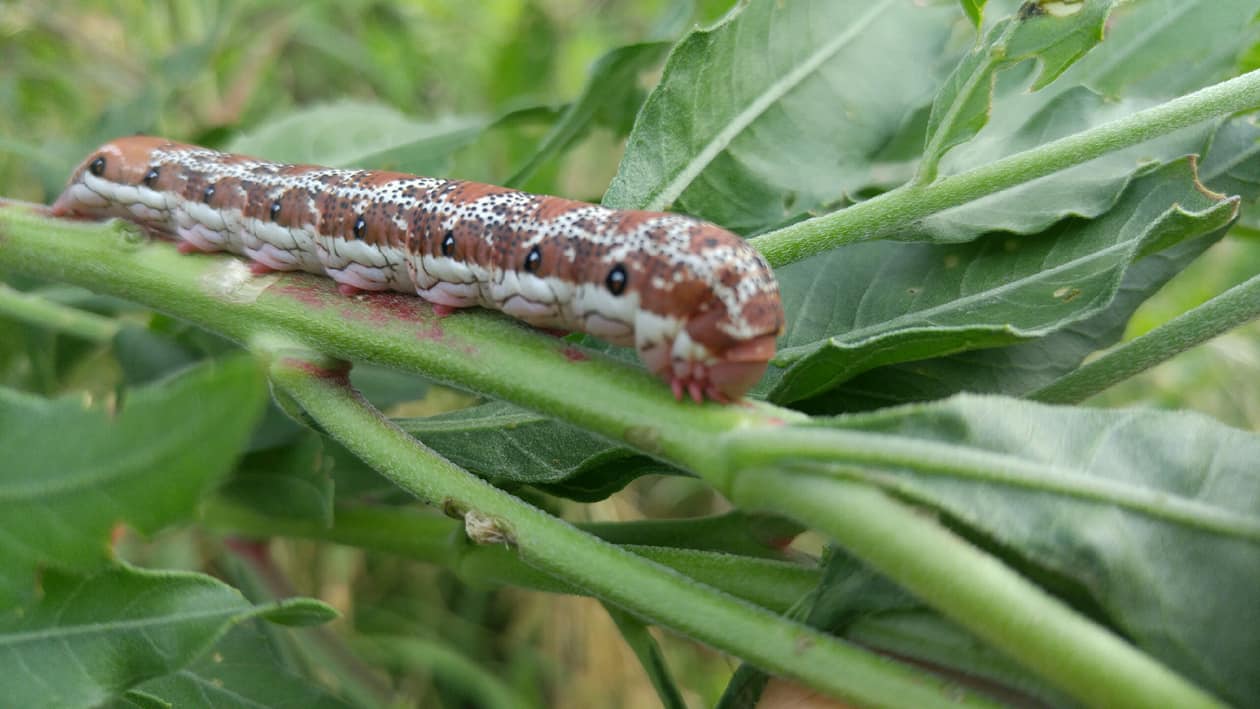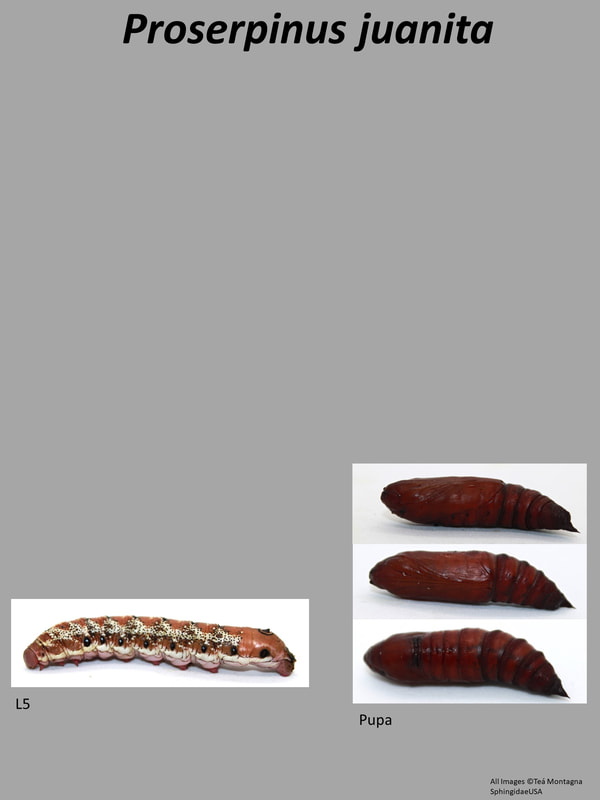|
Common Name(s): Juanita Sphinx
Ecology and Life History Overview: This beautiful small Sphingidae is found from Texas and New Mexico north to Alberta and Saskatchewan and east to Missouri. The adults are typically active from March through July. Caterpillars are typically active from May through September. This species is likely not heavily attracted to light, looking for it feeding on flowers during the day is more productive. This species is not sexually dimorphic. Eggs are laid singly on hostplants. Caterpillars can be found anywhere on the plants. Larvae are green without much patterning in the early instars, becoming orangey-reddish colored with bold markings in later instars. There doesn’t seem to be multiple color forms. Habitat and Searching for Larvae: Larvae feed upon Onagraceae plants, particularly Epilobium, Oenothera, and Gaura. As the plants are herbaceous in nature, larvae can be found virtually anywhere on them. They will occasionally eat flowers. Wetlands, meadows, roadsides, and yards can be productive for this species. Larvae are typically active from May through September across most of the range. It is unlikely that this species fluoresces under UV light. It is possible that the earlier instars will, however. Rearing Notes: {COMING SOON} Adult description: This is a small green Sphingidae species. Forewings are 22-26mm in length. The coloration of this species is typically green with red hindwings. Tuttle notes that southwestern populations are smaller and paler (2). This species is similar in appearance to Proserpinus gaurae. Larval description: L4: Larva is green in color with a reddish-pink horn that is very stubby. There is a white subdorsal line that runs the length of the larva. A second white subspiracular line can be found on each side of the larva as well. The entire larva has white stipules covering it, giving it a granular appearance. The thoracic legs are pink, as are the tips of the prolegs. L5: In the final instar, the larva is much more striking. The base color is orangey-red, and the spiracles are surrounded by a dark circle with a white dot in the middle. The white subdorsal line is much more pronounced. The dorsal view of this larva is especially striking. There are numerous white circles, creating almost a figure 8 like pattern and a black dorsal stripe. The subby horn is lost, and replaced with a black and yellow eyespot. |
Hostplants:
Click here to load this Caspio Cloud Database
Cloud Database by Caspio |
The gallery to the left contains photos of Proserpinus juanita adults. The data for each photo can be found by clicking on it. If you have a photo that you would like to submit to us, please contact us.
The gallery to the right contains photos of Proserpinus juanita larval and pupal stages. The data for each photo can be found by clicking on it. If you have a photo that you would like to submit to us, please contact us.
The gallery to the right contains photos of Proserpinus juanita larval and pupal stages. The data for each photo can be found by clicking on it. If you have a photo that you would like to submit to us, please contact us.
